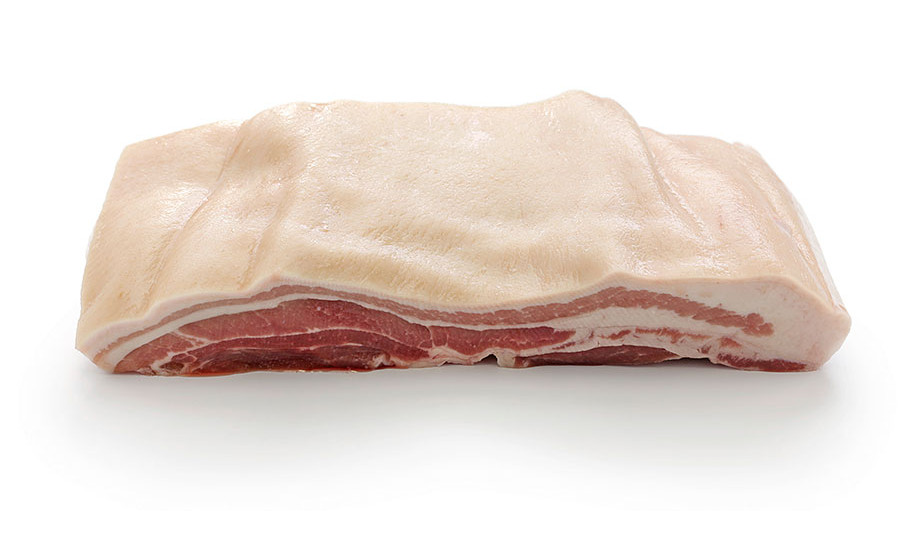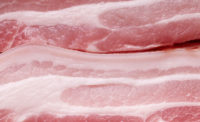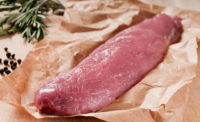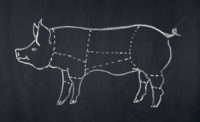Pork belly softness is a major quality defect that has reduced processors’ and packers’ profitability because of its effect on fabrication efficiency, bacon shelf stability, sensory quality and bacon slicing yield. Despite the importance of pork belly softness, however, its effective assessment, control and application in belly sorting procedure in the industry has been mostly hampered because there are so many factors contributing to its overall perception. The present research attempted to explore various physical and compositional factors that may influence pork belly softness that will provide easier assessment for further processing and pork belly sorting for various market requirements.
To look at this, 198 pigs of three different genotypes (Duroc, Lacombe and Iberian crossbred), two sexes (barrow and gilt), two slaughter weights (264 and 308 pounds) and three different diets (flaxseed, canola and control) were utilized in this study to comprehensively represent the potential variability in the pork marketplace. Following a 24-hour chill, left bellies were fabricated and belly softness assessed using both an objective measure of belly flop angle and a five-point subjective scale. Physical factors including measures of belly thickness, length, width and weight were collected from the pork bellies. Compositional factors including proximate analysis, fatty acid profile and iodine value (IV) were also determined on three predetermined pork belly layers (lean, subcutaneous fat and seam fat). Because variation in fatty acid profiles is often implicated in belly softness, we have also selected a few individual fatty acids alongside the IV to be included as part of the compositional predictors in the model.
There was a strong negative correlation between subjective belly score and the belly flop angle (r = -0.89, P < 0.01) which showed there is a strong relationship between the belly flop angle measurements and the subjective assessment. Overall, a total of 53 predictors including both chemical and physical variables were gathered for each belly. After running a statistical analysis using the stepwise procedure of SAS, it was found that seven variables made up 83 percent of what causes the objectively measured belly softness. About 82 percent of this variability was accounted for by the first five selected variables, including subcutaneous fat thickness, IV of the subcutaneous fat, width at belly’s midpoint, belly weight and belly length. Other variables that marginally contributed to this variability were palmitic acid of the seam fat and the thickness of the latissimus dorsi. But for the subjective score, the regression equation was able to account for about 77 percent of the belly softness variation, where the composition of the intermuscular fat was the first selected trait, followed by thickness of the subcutaneous fat layer whereas for the objective measurement, thickness of the subcutaneous fat layer was the most important variable, followed by subcutaneous fat composition. Belly length, weight and width influenced both parameters, but these effects were more important for the belly flop angle measurements. After correcting belly flop angle for belly length, the effect of belly weight disappeared and the effect of other traits was more similar to those observed for the subjective scoring model, with the model involving more fatty acid composition variables than the original model for the belly flop angle measurements. This may signify the need for belly length standardization in the assessment of pork belly softness online.
Hence, belly flop angle measurement has the potential to be used as an objective, inexpensive, non-destructive alternative for measuring belly firmness and for belly sorting. Belly length, however, should be corrected for in order to avoid its undue influence on pork belly softness measurements. Furthermore, the belly flop methodology would need to be modified to become a rapid, on-line technology prior to implementation in commercial plants. NP






